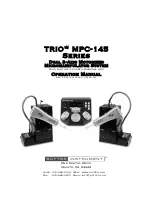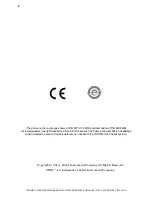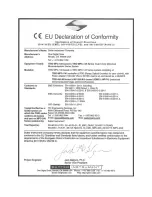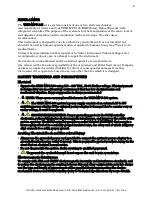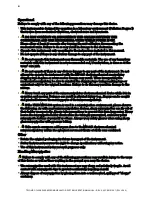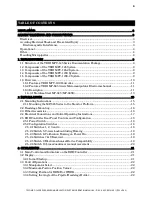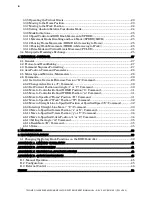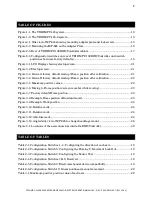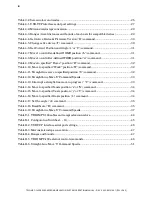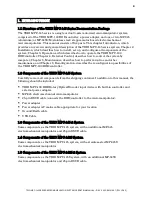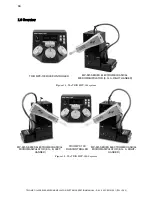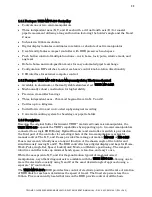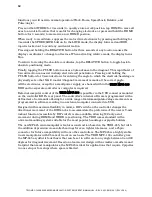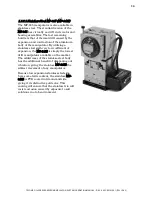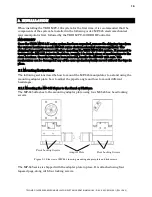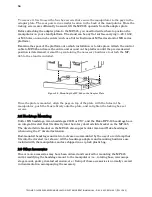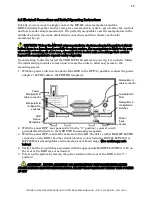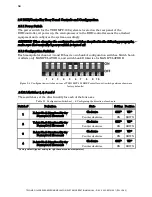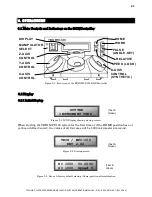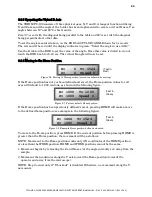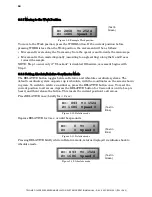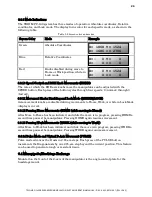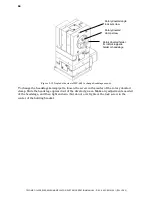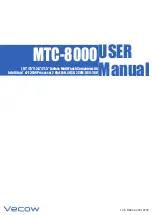
TRIO MPC-145 SERIES MICROMANIPULATOR SYSTEM OPERATION MANUAL – REV. 2.62C (20191001) (FW V2.62)
11
1.6.1
Features: TRIO MPC-100 Controller
•
Controls one or two micromanipulators
•
Three independent axes (X, Y, and Z) each with a virtual fourth axis (D) for coaxial
pipette movement utilizing a tangent function factoring the holder’s angle and the X and
Z axes.
•
Sub-micron 100nm resolution
•
Digital display indicates coordinates in relative or absolute of active manipulator
•
User-friendly, fanless compact controller with ROE preserves bench space
•
Push button control of multiple functions – work, home, lock, pulse, relative mode, and
angle set
•
Robotic home- and work-position moves for easy automated pipette exchange
•
Configuration DIP switches to select each axis’ control knob rotation directionality
•
USB interface for external computer control
1.6.2
Features: TRIO MP-845 3-Axis Micromanipulator Electromechanical
•
Available in aluminum or thermally stable stainless steel (TRIO MP-845S)
•
Mechanically robust construction for high stability
•
Precision cross-roller bearings
•
Three independent axes - 25 mm orthogonal travel in X, Y and Z
•
Carries up to a kilogram
•
Suited for
in vitro
and
in vivo
electrophysiological recording
•
Universal mounting system for headstage or pipette holder
1.6.3
Description
Based on the original Sutter Instrument TRIO™ motorized 3-axis micromanipulator, the
TRIO MPC-100 expands the TRIO’s capabilities by supporting up to two micromanipulators
connected to a single ROE (Rotary Optical Encoder) and controller. A switch is provided on
the front part of the controller for selecting which of the two manipulators is active for
manual control. The X, Y, and Z axes provide 25mm range of motion (MP-845 or MP-845S).
D-axis movement virtually uses a tangent function of the chosen angle of the holder and
simultaneously moving X and Z. The ROE controller has a digital display and keys for Home,
Work, Pulse, Angle Set, Speed, Lock (Quiet) Mode, and Relative positioning. The compact,
intuitive controller takes up minimal bench space, is fan-free, and easy to use.
While the axes provide X, Y, and Z orthogonal motion typical of most motorized
manipulators, a synthetic diagonal axis is available with the TRIO MPC-100 allowing one to
move the electrode coaxially using X and Z at the exact desired angle of approach using a
separate “D” control knob.
The TRIO MPC-100’s ROE provides fine control of electrode position and the rate of rotation
of ROE dials for each axis determines the speed of travel. The finest step size is less than
100nm. Five conveniently located buttons on the ROE provide control of all the basic

